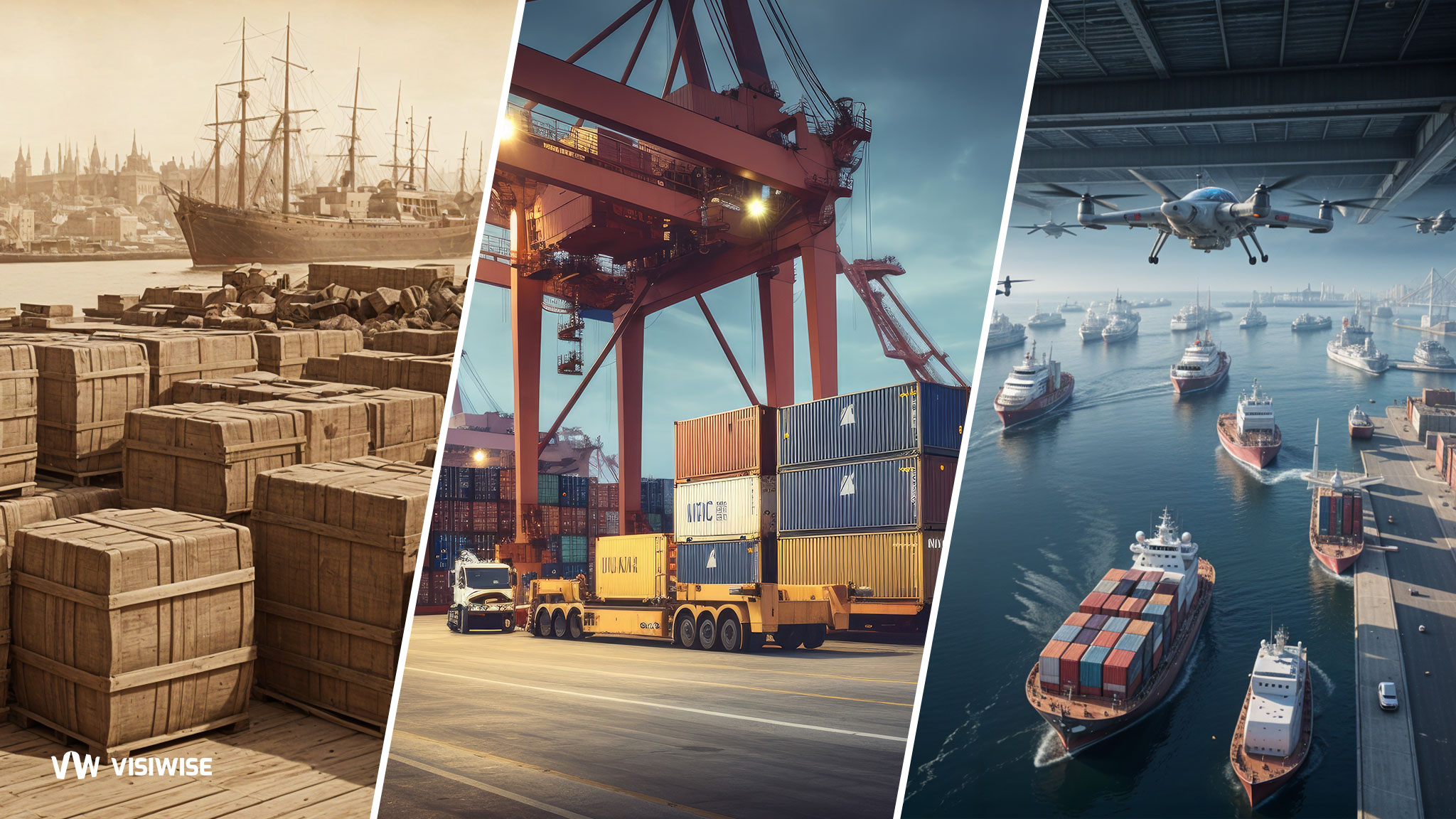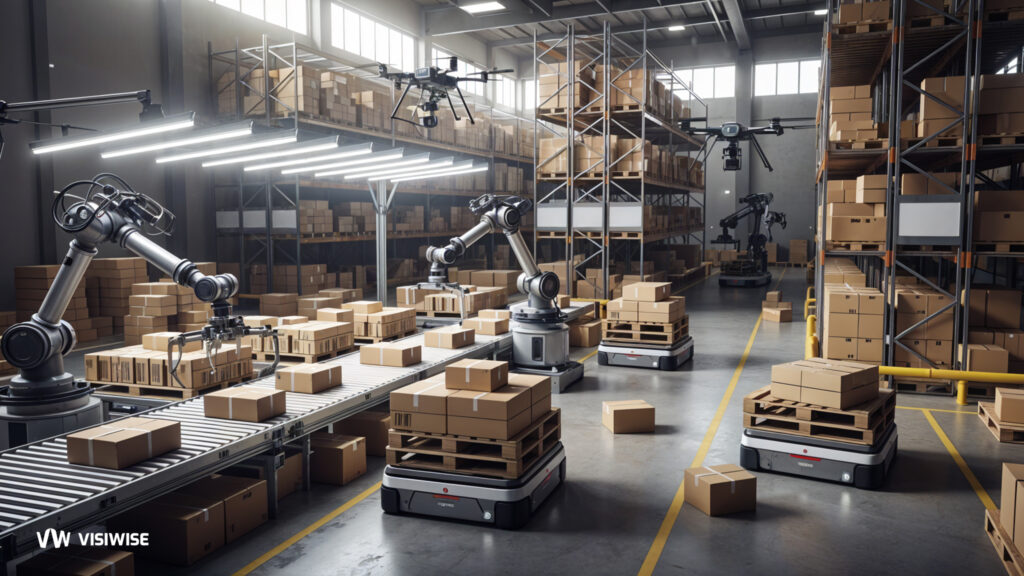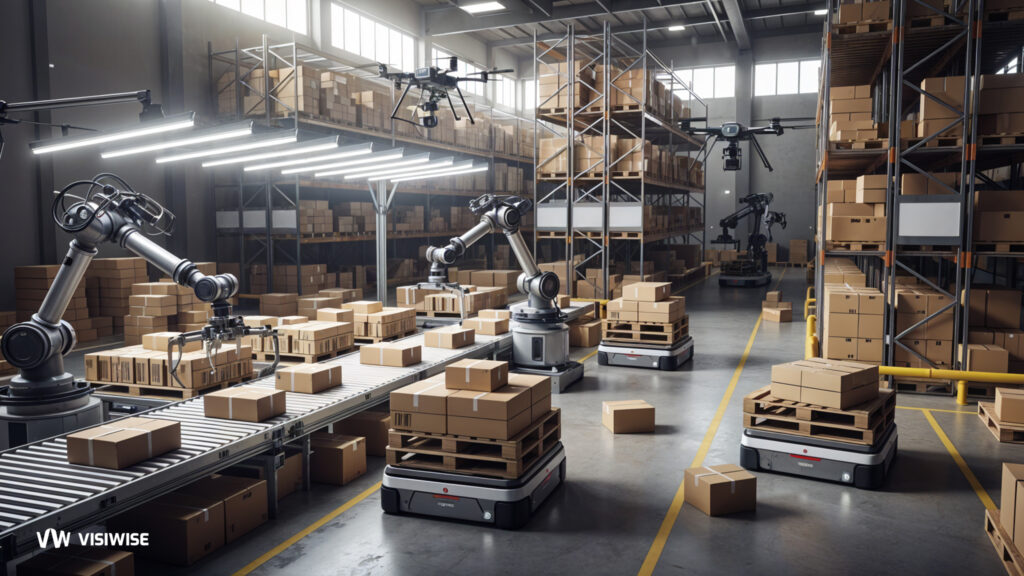Bulk shipments, the process of transporting large quantities of goods, have been a cornerstone of global trade for centuries. From the ancient trade routes that facilitated the exchange of spices and silk to the massive container ships that ply the seas today, the evolution of bulk shipping has mirrored the growth of global commerce. This article explores the history of bulk shipments, examines current trends, and looks ahead to future innovations that promise to revolutionize the industry.
The History of Bulk Shipments
Ancient and Medieval Times
The history of bulk shipments dates back to ancient times when civilizations like the Egyptians, Greeks, and Romans used boats and ships to transport goods. The Phoenicians, known for their seafaring skills, established extensive trade networks across the Mediterranean, carrying commodities such as wine, olive oil, and metals in large quantities.
In medieval times, the Hanseatic League, a powerful economic and defensive alliance of merchant guilds and market towns in Northwestern and Central Europe, dominated bulk trade. The League facilitated the transportation of bulk goods like grain, timber, and fish across the Baltic and North Seas, using cog ships that could carry substantial cargo loads.
The Age of Exploration
The Age of Exploration, spanning the 15th to 17th centuries, marked a significant turning point in the history of bulk shipments. European explorers, including Christopher Columbus and Vasco da Gama, discovered new trade routes to the Americas, Africa, and Asia. This era saw the introduction of the galleon, a large multi-deck ship designed to carry vast amounts of cargo over long distances.
The establishment of the Atlantic triangular trade network during this period enabled the bulk shipment of goods such as sugar, tobacco, and cotton from the Americas to Europe, while African slaves were transported to the New World. This network laid the groundwork for the global trade systems we see today.
The Industrial Revolution
The Industrial Revolution of the 18th and 19th centuries brought about transformative changes in bulk shipments. The advent of steam-powered ships revolutionized maritime transport, allowing for faster and more efficient movement of goods. The development of the steam engine also led to the creation of railroads, which complemented maritime transport by enabling bulk shipments across continents.
During this period, innovations such as the iron-hulled ship and the screw propeller further enhanced the capacity and reliability of bulk shipments. The opening of the Suez Canal in 1869 and the Panama Canal in 1914 shortened trade routes and reduced transit times, significantly boosting global trade.
Modern Bulk Shipments
Containerization
One of the most significant innovations in modern bulk shipments is containerization. Introduced in the mid-20th century, containerization involves the use of standardized containers to transport goods. This method revolutionized the shipping industry by simplifying the loading and unloading process, reducing shipping times, and minimizing the risk of damage and theft.
Malcolm McLean, an American entrepreneur, is credited with pioneering containerization in the 1950s. His vision led to the development of the first container ship, the Ideal-X, which made its maiden voyage in 1956. The widespread adoption of containerization in the 1960s and 1970s transformed global trade, enabling the efficient movement of bulk goods across vast distances.
Bulk Carriers and Tankers
In addition to container ships, bulk carriers and tankers play a crucial role in modern bulk shipments. Bulk carriers are specially designed vessels that transport unpackaged bulk cargo, such as grains, coal, ore, and cement. These ships are equipped with large cargo holds and specialized equipment for loading and unloading.
Tankers, on the other hand, are used to transport liquid bulk cargo, including crude oil, petroleum products, and chemicals. The development of supertankers and very large crude carriers (VLCCs) in the latter half of the 20th century enabled the transport of enormous quantities of liquid bulk cargo, contributing to the globalization of the energy market.
Digitalization and Automation
The digital revolution has brought about significant advancements in the bulk shipping industry. Digitalization and automation technologies have improved efficiency, safety, and sustainability. Innovations such as electronic data interchange (EDI), blockchain, and the Internet of Things (IoT) have streamlined supply chain management, enhancing visibility and traceability.
Automated systems, including autonomous cranes and robotic handling equipment, have revolutionized port operations, reducing labor costs and minimizing human error. The integration of artificial intelligence (AI) and machine learning algorithms into shipping logistics has optimized route planning, predictive maintenance, and cargo management.
Future Innovations in Bulk Shipments
Autonomous Ships
One of the most exciting prospects for the future of bulk shipments is the development of autonomous ships. These unmanned vessels, equipped with advanced sensors, AI, and navigation systems, have the potential to revolutionize maritime transport. Autonomous ships can operate continuously without the need for crew breaks, reducing transit times and operational costs.
Several companies and research institutions are actively working on autonomous ship projects. For example, the Norwegian company Yara International is developing the Yara Birkeland, an electric, autonomous container ship expected to reduce greenhouse gas emissions and improve safety. The successful implementation of autonomous ships could transform the shipping industry, making it more efficient, sustainable, and cost-effective.
Green Shipping Technologies
As environmental concerns take center stage, the bulk shipping industry is under increasing pressure to reduce its carbon footprint. Green shipping technologies aim to minimize the environmental impact of maritime transport through innovations in fuel, vessel design, and operational practices.
One promising development is the use of alternative fuels, such as liquefied natural gas (LNG), hydrogen, and biofuels, which produce fewer emissions compared to traditional marine fuels. Wind-assisted propulsion technologies, including sails and rotors, are also being explored to harness renewable energy and reduce fuel consumption.
Additionally, advancements in hull design and coating technologies are improving fuel efficiency by reducing drag and enhancing vessel performance. The adoption of energy-efficient practices, such as slow steaming and optimized route planning, further contributes to reducing the environmental impact of bulk shipments.
Blockchain and Supply Chain Transparency
Blockchain technology has the potential to revolutionize supply chain management in the bulk shipping industry. By providing a decentralized and immutable ledger, blockchain ensures transparency, traceability, and security in shipping transactions. This technology can help combat fraud, reduce paperwork, and streamline customs procedures.
Several pilot projects and initiatives are exploring the application of blockchain in maritime logistics. For instance, the IBM-Maersk collaboration on TradeLens aims to create a global shipping ecosystem that enhances data sharing and collaboration among stakeholders. The widespread adoption of blockchain technology could lead to more efficient and transparent supply chains, benefiting both businesses and consumers.
Internet of Things (IoT) and Predictive Analytics
The integration of IoT devices and sensors into bulk shipping operations is transforming the industry by providing real-time data and insights. IoT-enabled sensors can monitor various parameters, such as temperature, humidity, and cargo condition, ensuring the integrity and quality of goods during transit.
Predictive analytics, powered by AI and machine learning, leverage this data to optimize maintenance schedules, detect anomalies, and predict equipment failures. By proactively addressing maintenance issues, shipping companies can reduce downtime, improve safety, and extend the lifespan of vessels and equipment.
Hyperloop and High-Speed Rail
While maritime transport remains the dominant mode for bulk shipments, innovations in land transport, such as the Hyperloop and high-speed rail, could complement traditional shipping methods. The Hyperloop, a proposed high-speed transportation system using low-pressure tubes, aims to transport cargo at near-supersonic speeds. If realized, the Hyperloop could revolutionize the movement of goods over land, reducing transit times and congestion.
High-speed rail networks, already operational in several countries, offer another alternative for bulk shipments. By integrating high-speed rail with maritime and road transport, the logistics industry can create a seamless and efficient multimodal transport network.
10 Common Bulk Commodities Shipped Across the Globe
Bulk shipping is the backbone of global trade, facilitating the transport of large quantities of goods across oceans and continents. From raw materials to finished products, bulk shipments play a vital role in supplying essential commodities to markets around the world. In this article, we delve into the details of 10 common commodities that are typically shipped in bulk, exploring their significance, transportation methods, and key market dynamics.
1. Crude Oil
Crude oil is the lifeblood of the global economy, serving as a primary source of energy for transportation, industry, and residential use. It is extracted from oil fields located on land and offshore drilling platforms and transported to refineries for processing into various petroleum products. Crude oil is typically transported in large quantities via tankers, which can range from smaller vessels to massive supertankers capable of carrying millions of barrels of oil.
The transportation of crude oil is governed by strict safety and environmental regulations to prevent spills and accidents at sea. Tankers are equipped with advanced navigation systems, double hulls, and safety protocols to mitigate risks during transit. The market for crude oil is highly dynamic, influenced by factors such as geopolitical tensions, supply and demand dynamics, and fluctuations in oil prices on global markets.
2. Coal
Coal is a fossil fuel that has been used for centuries to generate electricity and power industrial processes. It is mined from coal deposits located in various regions around the world and transported to power plants and industrial facilities for combustion. Bulk carriers are the primary vessels used to transport coal in large quantities, with specialized vessels designed to handle different types of coal, including thermal coal used for power generation and metallurgical coal used in steel production.
The coal market is influenced by factors such as energy demand, environmental regulations, and competition from alternative energy sources such as natural gas and renewable energy. Despite concerns about its environmental impact, coal remains a significant commodity in global energy markets, particularly in countries with abundant coal reserves and growing energy needs.
3. Iron Ore
Iron ore is a key raw material used in the production of steel, which is essential for construction, infrastructure development, and manufacturing. It is mined from iron ore deposits located in countries such as Australia, Brazil, and China and transported to steel mills around the world. Bulk carriers are the primary vessels used to transport iron ore, with specialized ore carriers designed to handle large quantities of ore in bulk.
The iron ore market is influenced by factors such as steel demand, iron ore prices, and infrastructure investment. China, as the world’s largest steel producer, plays a central role in the iron ore market, driving demand for raw materials to support its construction and manufacturing sectors. The iron ore trade is characterized by long-distance shipments from major exporting countries to steel-producing regions, highlighting the importance of efficient transportation logistics.
4. Grain
Grain, including wheat, corn, and soybeans, is a staple food commodity that is essential for global food security. It is cultivated in agricultural regions around the world and transported to food processing plants, livestock feedlots, and distribution centers. Bulk carriers and specialized grain carriers are used to transport grain in large quantities, with vessels equipped with grain handling equipment and storage facilities to ensure the quality and integrity of the cargo during transit.
The grain market is influenced by factors such as weather conditions, crop yields, trade policies, and food consumption patterns. Fluctuations in grain prices can impact food prices and agricultural markets, affecting farmers, traders, and consumers worldwide. The efficient transport of grain is critical to ensuring food availability and addressing food shortages in regions that rely on imports to meet their dietary needs.
5. Steel
Steel is a versatile material used in construction, manufacturing, and infrastructure projects around the world. It is produced from iron ore in steel mills through a process of smelting and refining. Finished steel products, including coils, sheets, and beams, are transported to customers and construction sites via bulk carriers and specialized vessels.
The steel market is influenced by factors such as construction activity, industrial production, and infrastructure investment. Demand for steel is closely linked to economic growth, with developing countries driving consumption as they urbanize and industrialize. Steel trade flows reflect regional production capacities and consumption patterns, with major exporters such as China, Japan, and South Korea supplying steel to global markets.
6. Fertilizers
Fertilizers are essential for agricultural production, providing plants with nutrients such as nitrogen, phosphorus, and potassium to support growth and yield. They are manufactured in fertilizer plants using raw materials such as natural gas, phosphate rock, and potash and transported to agricultural regions via bulk carriers and specialized vessels.
The fertilizer market is influenced by factors such as crop prices, weather conditions, and government policies on agricultural subsidies and trade tariffs. Demand for fertilizers is driven by population growth, rising food consumption, and the need to improve agricultural productivity. Efficient transportation and distribution of fertilizers are critical to ensuring timely access to inputs and maximizing crop yields.
7. LNG (Liquefied Natural Gas)
LNG is a natural gas that has been cooled to a liquid state for ease of transportation and storage. It is extracted from natural gas fields and transported to liquefaction plants, where it is cooled to -162°C (-260°F) and converted into LNG. LNG carriers are used to transport LNG in large quantities from exporting countries to import terminals and end users.
The LNG market is influenced by factors such as natural gas prices, liquefaction capacity, and demand for clean energy alternatives. LNG is increasingly used as a fuel for power generation, transportation, and industrial processes due to its lower emissions compared to traditional fossil fuels. The development of LNG infrastructure and shipping technologies has expanded global trade in LNG, with major exporting countries such as Qatar, Australia, and the United States supplying LNG to markets in Asia, Europe, and beyond.
8. Cement
Cement is a binding agent used in construction projects to bind aggregates such as sand and gravel together and form concrete. It is produced in cement plants by grinding clinker, a mixture of limestone, clay, and other minerals, with gypsum and other additives. Bulk carriers transport cement in powdered form from cement plants to construction sites and distribution centers.
The cement market is influenced by factors such as construction activity, infrastructure investment, and urbanization trends. Demand for cement is driven by population growth, urbanization, and economic development, particularly in emerging markets where construction activity is booming. Efficient transportation logistics are essential to ensure a reliable supply of cement to construction projects and meet the growing demand for infrastructure and housing.
9. Sugar
Sugar is a widely consumed commodity used in food and beverage production around the world. It is extracted from sugarcane and sugar beet plants and processed into various forms, including raw sugar, refined sugar, and sugar syrups. Bulk carriers transport sugar in bulk from sugar-producing regions to processing plants and markets.
The sugar market is influenced by factors such as sugar prices, government policies, and consumer preferences. Demand for sugar is driven by population growth, rising incomes, and changing dietary habits, particularly in emerging markets where demand for processed foods and beverages is increasing. Efficient transportation and distribution networks are essential to ensure a stable supply of sugar to meet consumer demand and support food processing industries.
10. Chemicals
Chemicals encompass a wide range of products used in various industries, including petrochemicals, fertilizers, and industrial chemicals. They are manufactured in chemical plants using raw materials such as petroleum, natural gas, and minerals and transported to end users via tankers, bulk carriers, and specialized vessels.
The chemical market is diverse and dynamic, with demand influenced by factors such as industrial production, consumer spending, and regulatory requirements. Chemicals are used in manufacturing processes, agriculture, healthcare, and consumer products, making them essential inputs for modern economies. Efficient transportation and logistics are critical to ensure the safe and reliable supply of chemicals to end users and support economic growth and development.
In conclusion, bulk shipping plays a vital role in the global economy by facilitating the transport of essential commodities across oceans and continents. The efficient transportation of commodities such as crude oil, coal, iron ore, grain, steel, fertilizers, LNG, cement, sugar, and chemicals is essential to meet the needs of industries, consumers, and communities worldwide. By understanding the dynamics of these commodity markets and investing in transportation infrastructure and logistics, stakeholders can optimize supply chains, minimize costs, and support sustainable economic development.
Wrap-up
The history of bulk shipments is a testament to human ingenuity and the relentless pursuit of progress. From ancient trade routes to the modern marvels of containerization and digitalization, the evolution of bulk shipping has been driven by the need to move goods efficiently and reliably across the globe. As we look to the future, emerging technologies such as autonomous ships, green shipping, blockchain, and IoT promise to further transform the industry, making it more sustainable, transparent, and efficient.
The challenges ahead, including environmental concerns and the need for greater supply chain resilience, will require continued innovation and collaboration among stakeholders. By embracing these future innovations, the bulk shipping industry can navigate the complexities of global trade and continue to play a vital role in connecting economies and communities worldwide.



